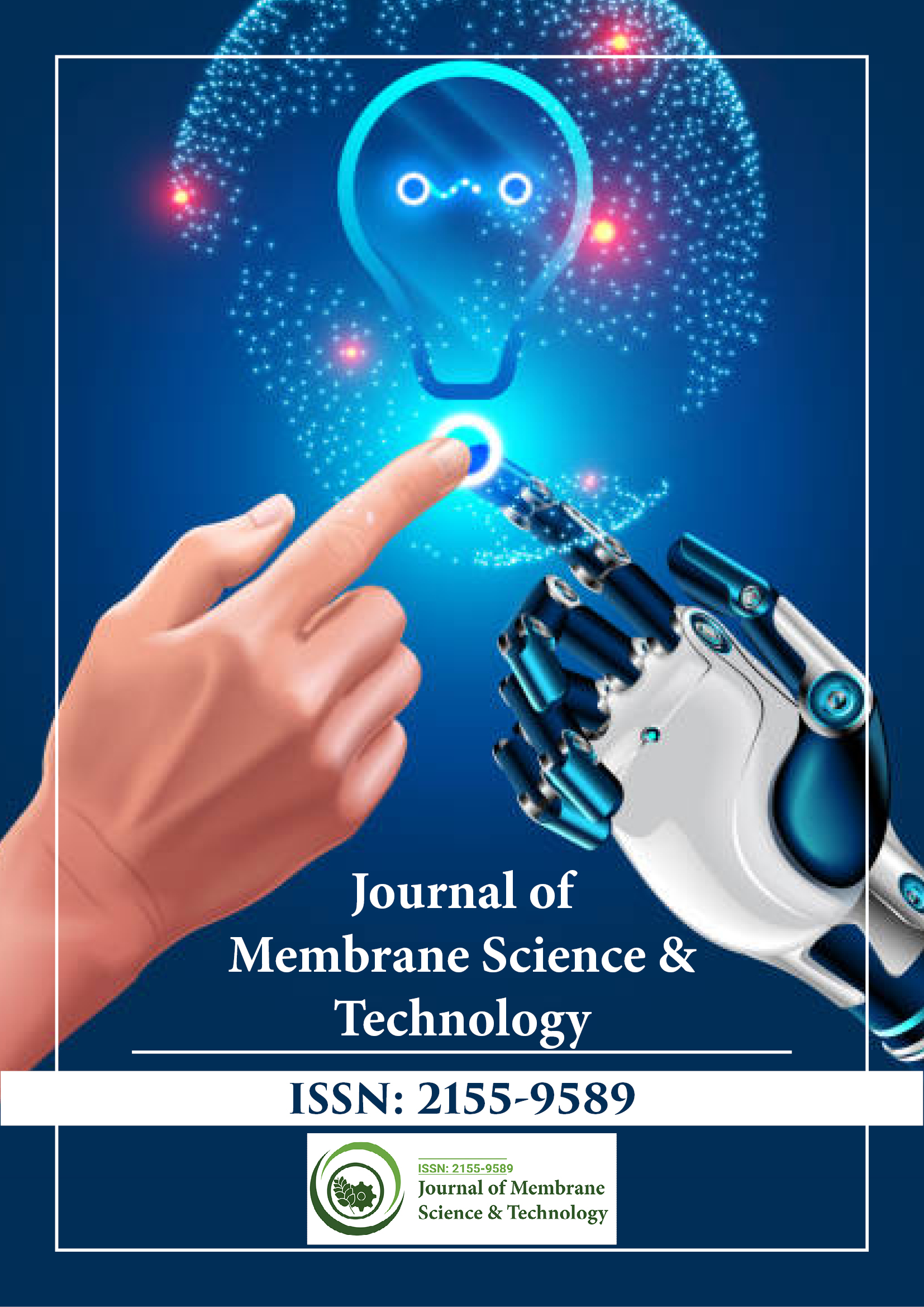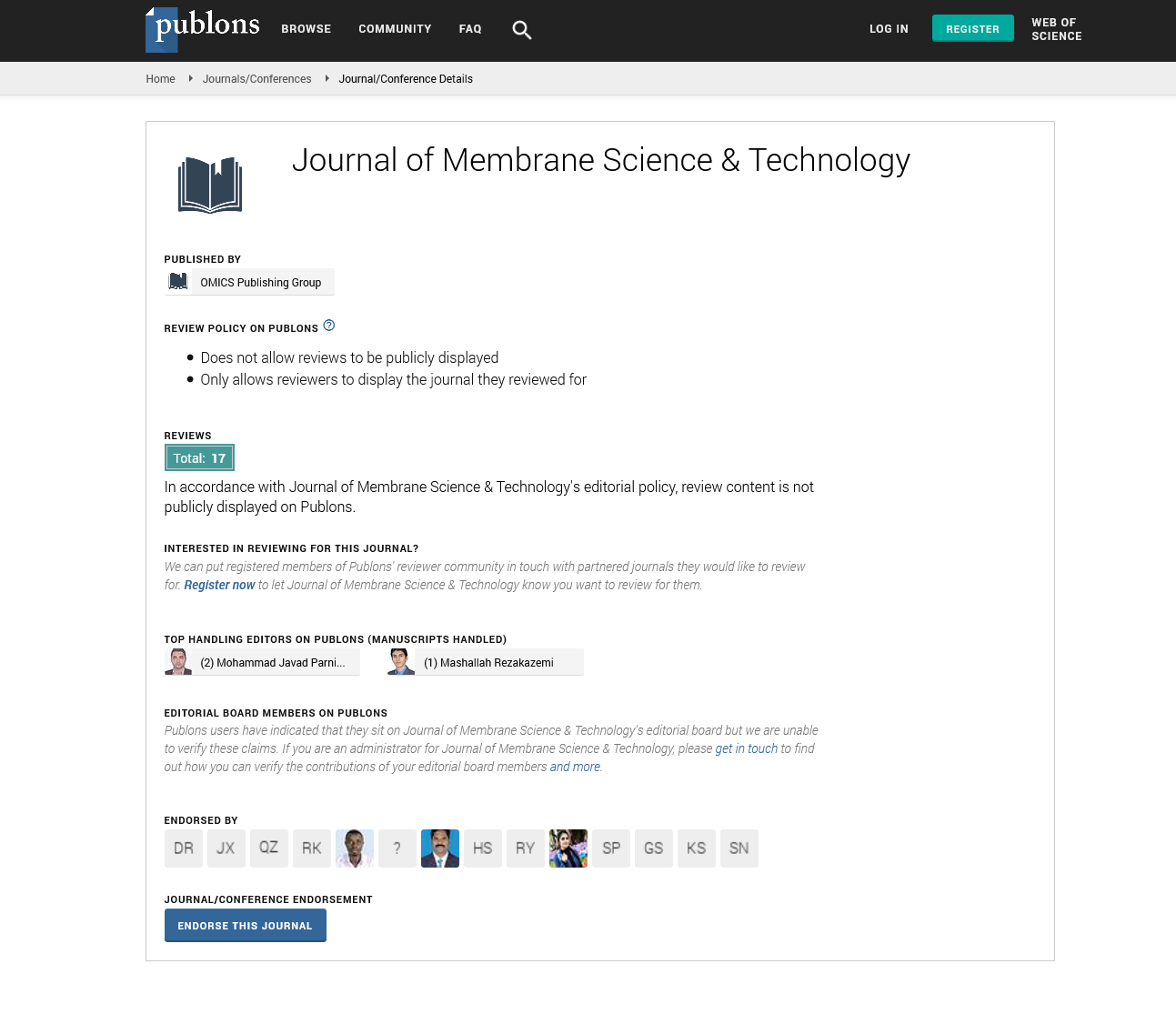Indexed In
- Open J Gate
- Genamics JournalSeek
- Ulrich's Periodicals Directory
- RefSeek
- Directory of Research Journal Indexing (DRJI)
- Hamdard University
- EBSCO A-Z
- OCLC- WorldCat
- Proquest Summons
- Scholarsteer
- Publons
- Geneva Foundation for Medical Education and Research
- Euro Pub
- Google Scholar
Useful Links
Share This Page
Journal Flyer

Open Access Journals
- Agri and Aquaculture
- Biochemistry
- Bioinformatics & Systems Biology
- Business & Management
- Chemistry
- Clinical Sciences
- Engineering
- Food & Nutrition
- General Science
- Genetics & Molecular Biology
- Immunology & Microbiology
- Medical Sciences
- Neuroscience & Psychology
- Nursing & Health Care
- Pharmaceutical Sciences
Opinion Article - (2025) Volume 15, Issue 1
Enhancing Water Purity with Reverse Osmosis Filters: Efficient and Precise Filtration Technology Explained
Zhije Jung*Received: 31-Jan-2025, Manuscript No. JMST-25-29277; Editor assigned: 03-Feb-2025, Pre QC No. JMST-25-29277 (PQ); Reviewed: 17-Feb-2025, QC No. JMST-25-29277; Revised: 24-Feb-2025, Manuscript No. JMST-25-29277 (R); Published: 03-Mar-2025, DOI: 10.35248/2155-9589.25.15.413
Description
Reverse osmosis filters have become an essential part of modern water purification, offering a highly efficient and precise method for delivering clean and safe drinking water. These filters are now widely used in homes, commercial settings and industrial applications due to their superior ability to remove a broad range of contaminants. The heart of this technology lies in the use of a semi-permeable membrane that allows only water molecules to pass through while rejecting dissolved impurities such as heavy metals, bacteria, viruses and harmful chemicals.
Unlike traditional filtration systems that rely on physical sieving or chemical treatment, reverse osmosis operates on a molecular level. The process begins with incoming water passing through pre-filtration stages designed to protect the sensitive membrane. A sediment filter removes large particles like sand, rust and dirt, while a carbon filter adsorbs chlorine and organic substances that could degrade the membrane or negatively impact the taste of water. Following this, water is pressurized and forced through the RO membrane, which can remove up to 99 percent of total dissolved solids, including substances like fluoride, lead, nitrates and even pathogens. After filtration, the purified water either goes into a storage tank or directly to the faucet, often passing through a post-carbon filter that enhances taste and odor by eliminating any remaining traces of undesirable compounds. Some systems also incorporate an Ultraviolet (UV) filter at the final stage, using light to neutralize any surviving microorganisms for additional safety.
The multi-stage nature of this filtration process ensures a thorough and reliable purification outcome. Clean water, referred to as permeate, is separated from the concentrate or brine, which contains all the rejected contaminants and is discharged through a waste line. While effective, this process does generate some water waste, a point of concern that is being addressed by newer system designs.
Reverse osmosis filters provide a number of significant benefits that have contributed to their widespread use. They produce water of exceptional purity by eliminating a wide variety of contaminants that can affect health and water quality. This leads to safer drinking water and improved taste, free from the chlorine, sulfates, and other chemicals that often make tap water unpleasant. Furthermore, RO systems contribute to environmental sustainability by reducing the dependence on bottled water, thus minimizing plastic waste. Their low maintenance requirements, involving periodic replacement of filters and membranes, also make them a convenient solution for most users.
These filters are incredibly versatile and are employed in various settings beyond residential use. Many commercial establishments such as cafes, restaurants and offices rely on RO filters to ensure consistent water quality. In industrial environments, reverse osmosis is critical in processes that demand ultra-pure water, including food and beverage manufacturing, pharmaceutical production and electronics assembly. The technology is also widely used in specialized applications like aquariums and hydroponic farming, where mineral-free water is essential for maintaining healthy aquatic life and sensitive plant systems.
Despite their advantages, RO filters do present some limitations. One major concern is water wastage, as traditional systems may discard two to three gallons of water for every gallon purified. The purification process can also be slower compared to other methods and because reverse osmosis removes both harmful and beneficial minerals, the resulting water may lack essential elements like calcium and magnesium. Additionally, RO systems often come with higher initial costs and require ongoing maintenance, including regular filter and membrane replacement, to maintain optimal performance. However, many of these challenges are mitigated through thoughtful system design and the use of re-mineralization cartridges that restore essential minerals to the water.
Technological advancements are continuously improving reverse osmosis systems to make them more efficient, sustainable and user-friendly. Water-saving models now offer better recovery rates and include smart wastewater recycling features. Remineralization filters have been introduced to restore minerals lost during the filtration process, improving both health benefits and taste. The development of compact and modular systems has made installation easier, especially in space-constrained environments like apartment kitchens. Additionally, smart monitoring tools with sensors and digital indicators now provide real-time data on water quality, filter life and maintenance needs, ensuring users can manage their systems effectively. Innovations in membrane materials have also led to the creation of eco-friendly and longer-lasting filters that resist fouling and reduce replacement frequency.
Conclusion
In a time when access to clean water is more critical than ever, reverse osmosis filters offer a dependable and proven solution for water purification. As concerns about water contamination and public health grow, this technology continues to gain importance in diverse settings. Although issues like water waste and cost remain areas of focus, ongoing innovation promises to make RO systems even more efficient, affordable and accessible. Investing in a quality reverse osmosis filter not only enhances personal health and well-being but also supports broader environmental and public health goals. With continued advancements, reverse osmosis stands out as one of the most effective and sustainable methods for ensuring safe drinking water now and in the future.
Citation: Jung Z (2025). Enhancing Water Purity with Reverse Osmosis Filters: Efficient and Precise Filtration Technology Explained. J Membr Sci Technol. 15:413.
Copyright: © 2025 Jung Z. This is an open-access article distributed under the terms of the Creative Commons Attribution License, which permits unrestricted use, distribution, and reproduction in any medium, provided the original author and source are credited.

